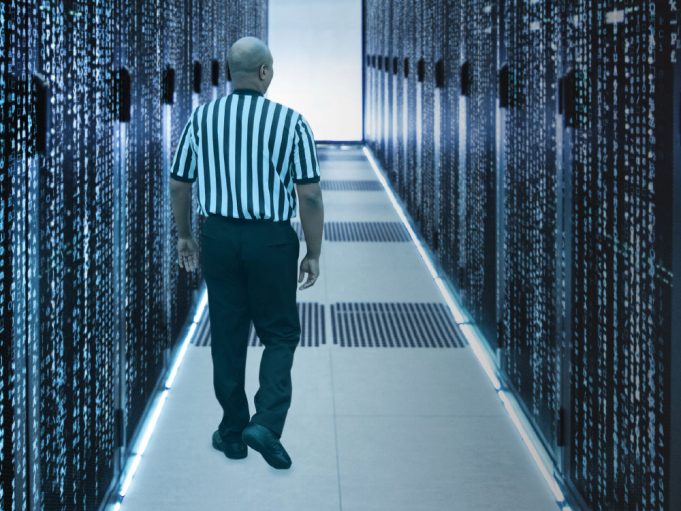One of my favorite books is Instant Replay. The author, Jerry Kramer, was an All-Pro guard for the Green Bay Packers. In 1968, he kept a diary of what turned out to be a championship season. It was a breakthrough book for its time, full of behind-the-scenes information that let fans know what life as a pro football player was really like.
A recurring theme throughout the book involves the team’s use of film to review players’ performance and as scouting material for upcoming opponents. In fact, Kramer’s observation that Dallas defensive lineman Jethro Pugh could be moved off the line of scrimmage in a short-yardage situation was a key element in the Packers’ victory in the famed Ice Bowl game that propelled Green Bay to Super Bowl II.
Much of the anxieties involving watching film were centered on the players’ concerns about whether a mistake would be visible when coaches examined the tape after the game. “How’s that going to look on film?” was a common question.
Advances in technology have drastically altered how we do our jobs
The modern official likely asks him or herself that same question during the course of a season. That’s because advances in technology have drastically altered the way we go about our jobs.
Although “Make it be there” is still a valid pregame admonition, it might be more correct to urge crewmates to “Make it so big it shows up on film.”
After the game, when Kramer saw his block on Pugh for the winning touchdown on television several times, his thought was, “Thank God for instant replay.” It propelled his already stellar reputation into the stratosphere (and no doubt boosted sales of his book the next year).
By the same token, officials often feel a great sense of relief when one of their rulings is as obvious on the game film as it was on the court or field. I know I do.
One of the concerns pro supervisors and major college coordinators have regarding the use of instant replay as an officiating tool is that officials sometimes adopt the attitude, “It doesn’t matter what I call because replay will straighten it out either way.” Another drawback to the explosion of technology is what is known as “officiating to the video.” Contact or violations that would (or should) be called are not being called because officials fear the video won’t support them.
Whether or not that is a valid concern is debatable. It may vary from official to official, coordinator to coordinator and level to level.
What is not in dispute is the glut of video available to us. When once we had to beg a coach to send a copy of a game tape (including providing the tape or disc and a self-addressed stamped envelope), we are now able to view many of our games free online. In some cases, the video is posted before we return home. Talk about instant gratification.
I have long been a fan of video as a review and training tool. I’ll admit that my first look at the tape of my own game involves finding the fouls I called and any close or controversial plays in which I was involved, just to see if I was correct. Call it vanity if you wish; I prefer to think of it as self-evaluation. I go through it a second time in its entirety and look for things that I may have missed during the game. It’s rare that I don’t look at a play multiple times to check my positioning and mechanics.
As a longtime educational chair for our local association, I used video as a major part of our meetings. Feedback from members indicated the video was the members’ favorite part of the meetings and certainly the portion from which they felt they get the most benefit.
Video can also be used as a preparation tool. Find video of other games involving the teams and watch to get a flavor of their strategies and tendencies. Which players seem to garner the most attention from opponents? Do the teams do anything outside the norm (e.g. two passes and hoist up a three, hurry-up offense, etc.)? A little time on the front end can save you from being surprised on the back end.
I don’t know for sure whether or not we’ve reached the zenith of technological or other advances that will impact what officials do and how we do it. But I do know this: Video has made me a better informed, better educated and happier official overall.
What's Your Call? Leave a Comment:
Note: This article is archival in nature. Rules, interpretations, mechanics, philosophies and other information may or may not be correct for the current year.
This article is the copyright of ©Referee Enterprises, Inc., and may not be republished in whole or in part online, in print or in any capacity without expressed written permission from Referee. The article is made available for educational use by individuals.


















